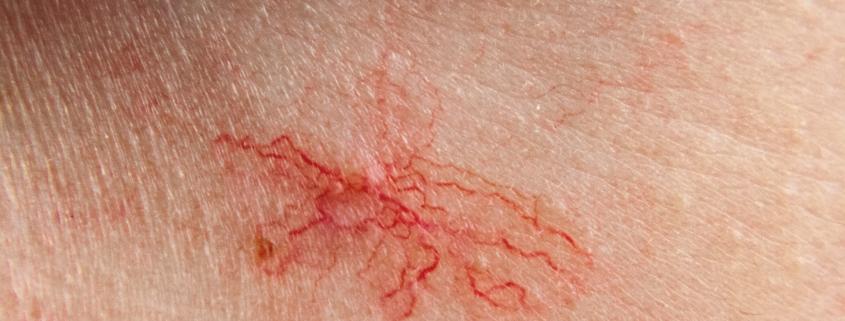Understanding Broken Veins
Causes and Effective Treatment Options
Broken veins, also known as spider veins or telangiectasia, are small, dilated blood vessels that appear near the surface of the skin. They often resemble a spider’s web or tree branches, and while they are generally harmless, they can be aesthetically displeasing to many individuals. In this article, we will explore the common causes of broken veins and discuss effective treatment options to help you regain smooth, flawless skin.
CAUSES OF BROKEN VEINS
As we age, the elasticity and strength of our blood vessels naturally diminish. This can lead to weakened vein walls, making them more susceptible to breaking and forming spider veins. Some individuals are genetically predisposed to developing broken veins. If your parents or close relatives have a history of spider veins, you are more likely to experience them as well.
Fluctuations in hormone levels, such as during pregnancy or menopause, can cause blood vessels to dilate and weaken, resulting in broken veins.
Prolonged sun exposure and lifestyle can influence the development of broken veins. Excessive exposure to harmful ultraviolet (UV) rays from the sun can damage the skin and blood vessels, leading to the appearance of spider veins. Sedentary lifestyles, obesity, and prolonged periods of standing or sitting can increase the pressure on the veins, contributing to their breakdown.
TREATMENT OPTIONS FOR BROKEN VEINS
Laser treatments target the broken veins with focused beams of light, causing them to coagulate and gradually disappear. This non-invasive procedure is typically painless and requires minimal downtime.
Intense Pulsed Light (IPL) therapy utilises pulses of broad-spectrum light to heat and destroy the damaged veins. This method is particularly effective for treating spider veins on the face and is known for its ability to minimise discomfort and provide quick results.
Diathermy utilises a high-frequency electrical current to target and seal off damaged blood vessels, reducing their appearance.
Making certain changes to your lifestyle can help prevent the formation of new broken veins and reduce the severity of existing ones. Regular exercise, maintaining a healthy weight, and avoiding prolonged periods of sitting or standing can significantly improve vein health. Avoid prolonged sun exposure and protect the skin with sun protection factor 30 (SPF)
While broken veins can be a source of concern for many individuals, there are several effective treatment options available to address and minimise their appearance. At Hough Green Clinic we have many years of experience of treating broken veins and whether you choose laser therapy, IPL therapy or diathermy or a combination of treatments, our experienced therapists will advise you about the most suitable treatment for the best possible outcome.
We have some exciting new treatments coming to the clinic very soon, so follow us on social media for some hints and the launch date.



